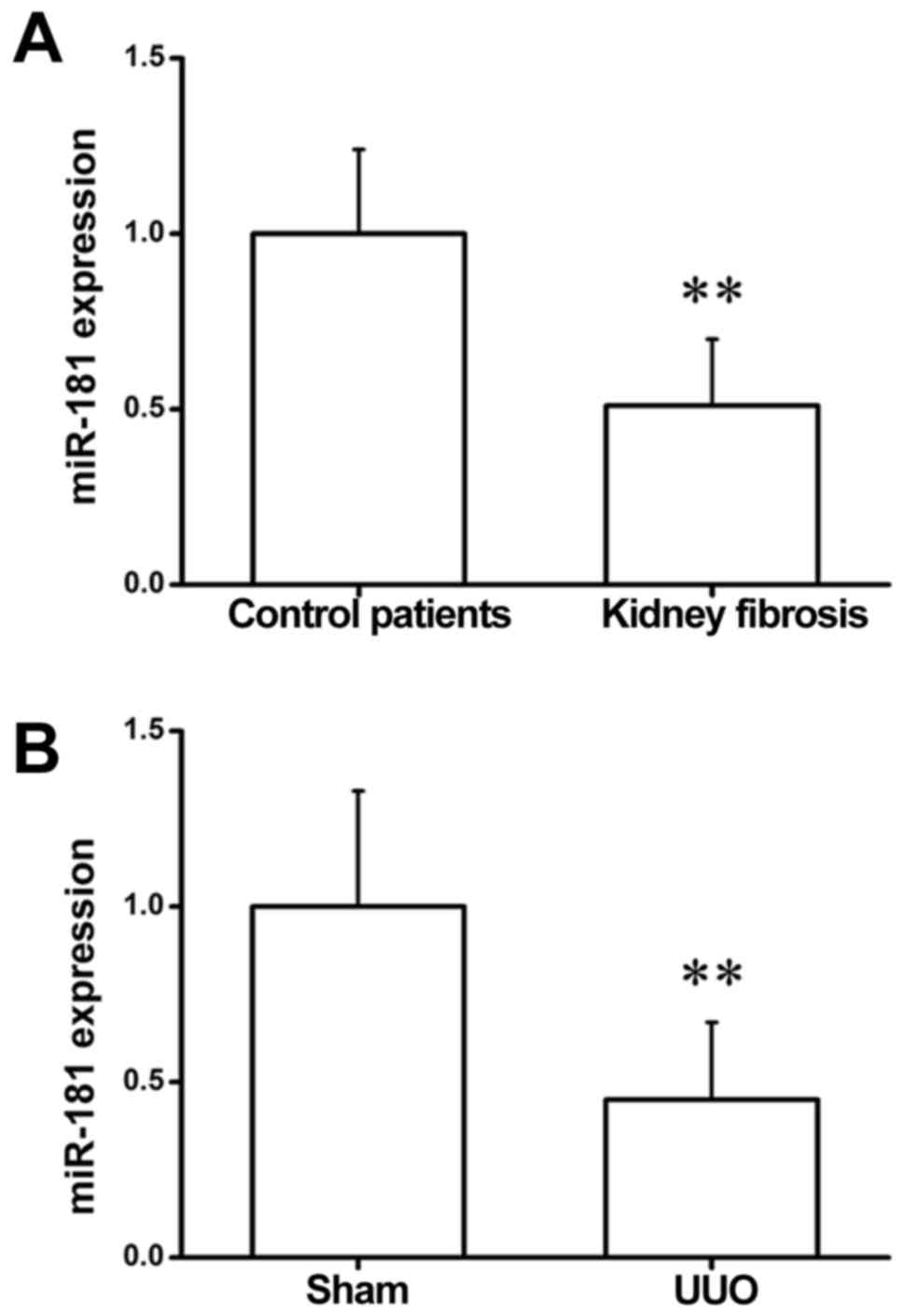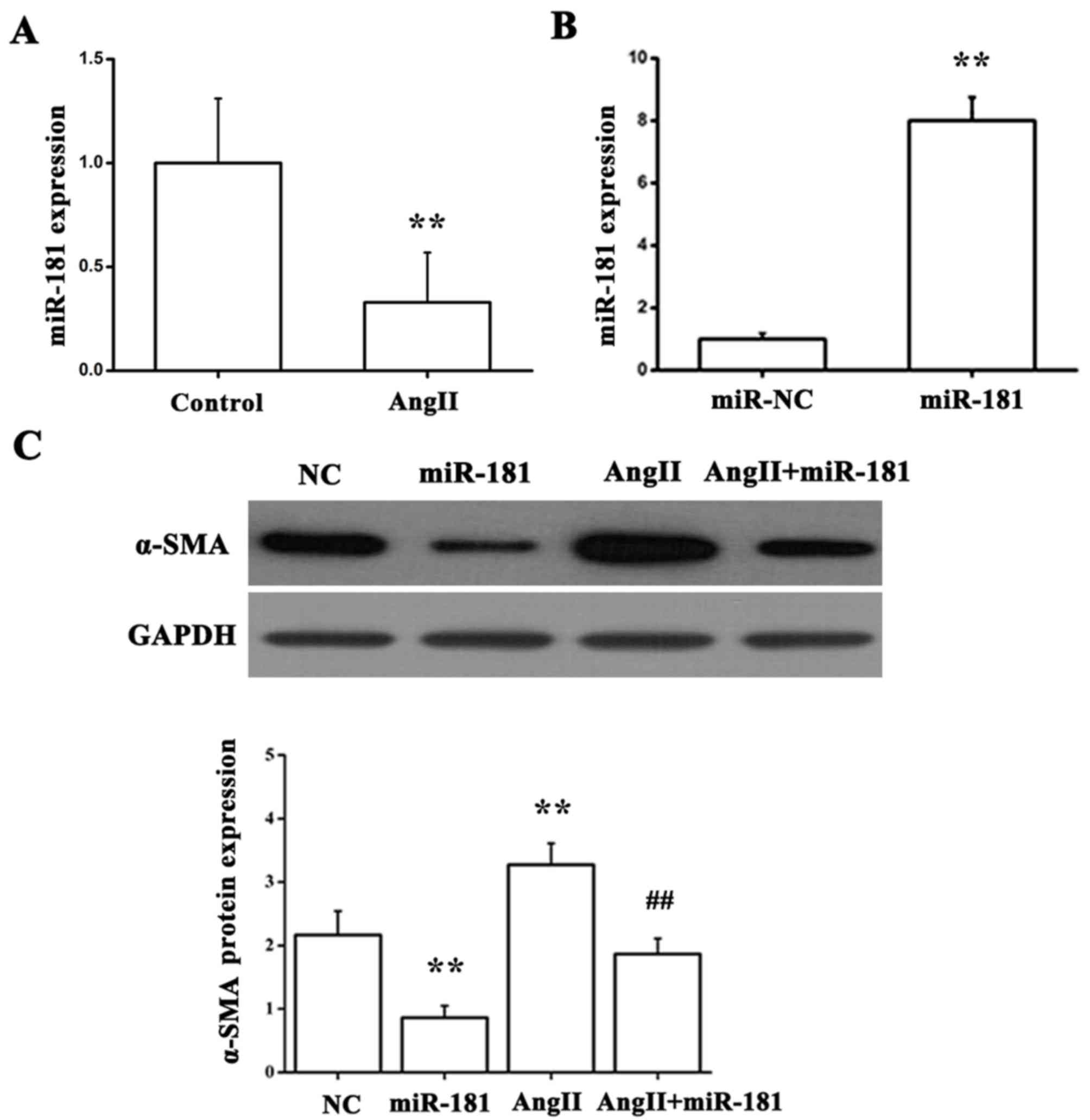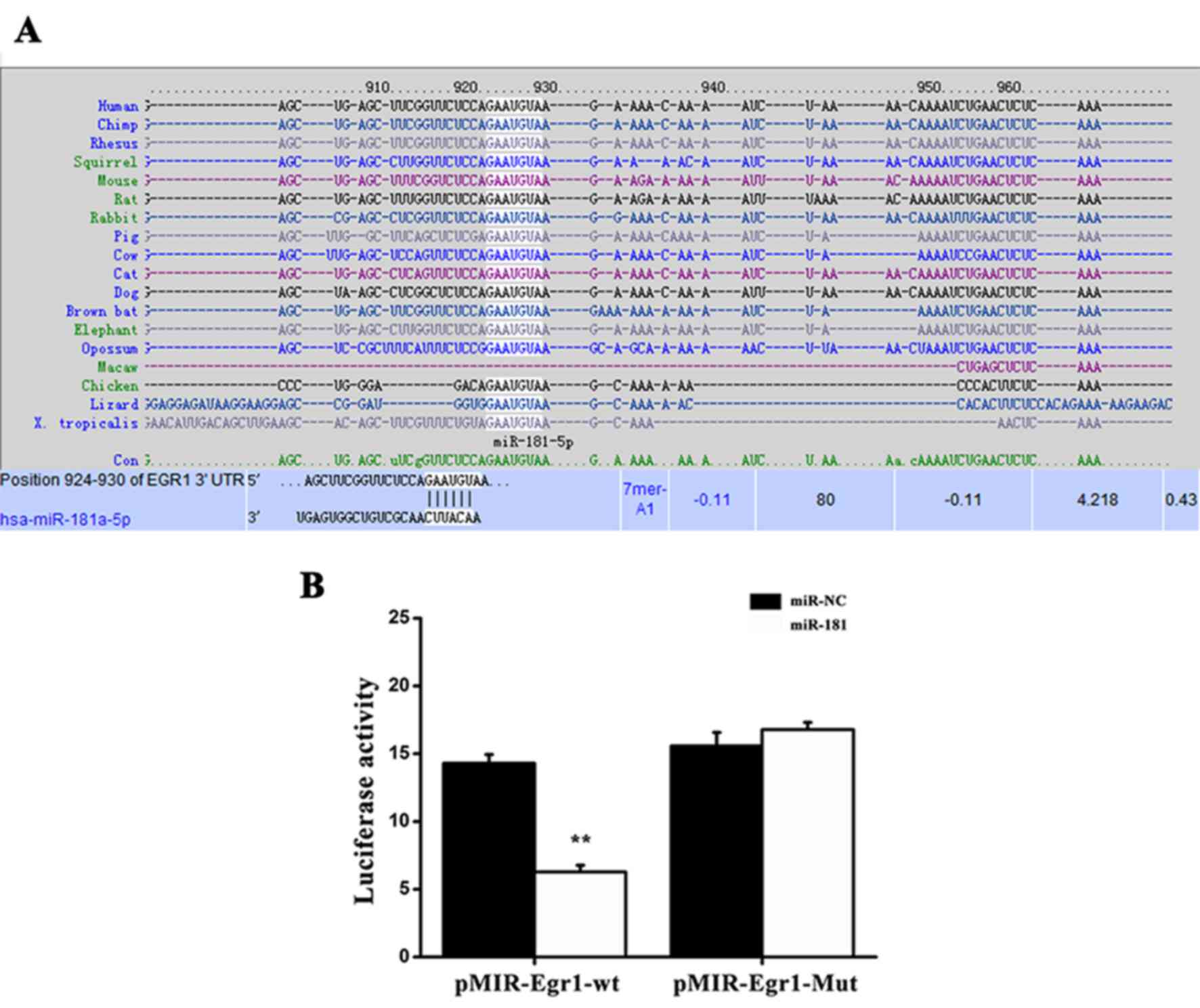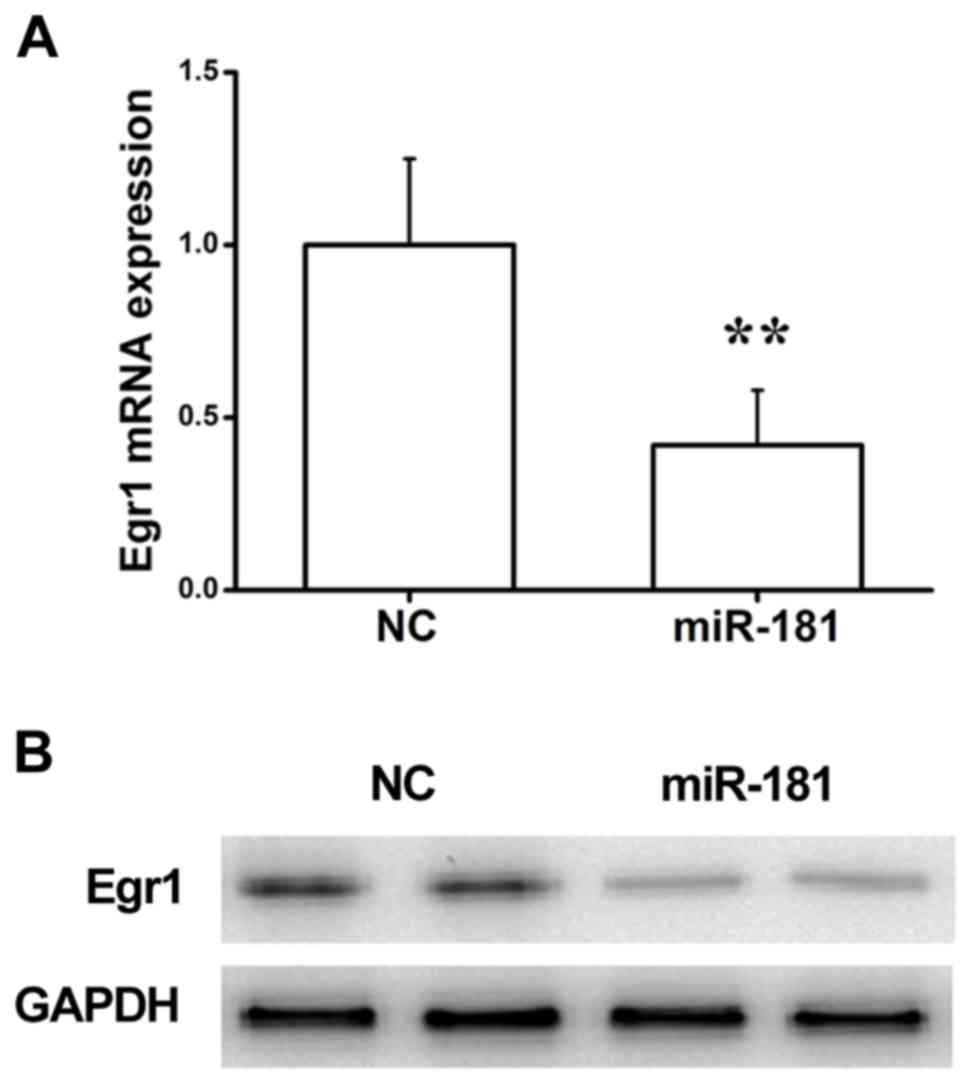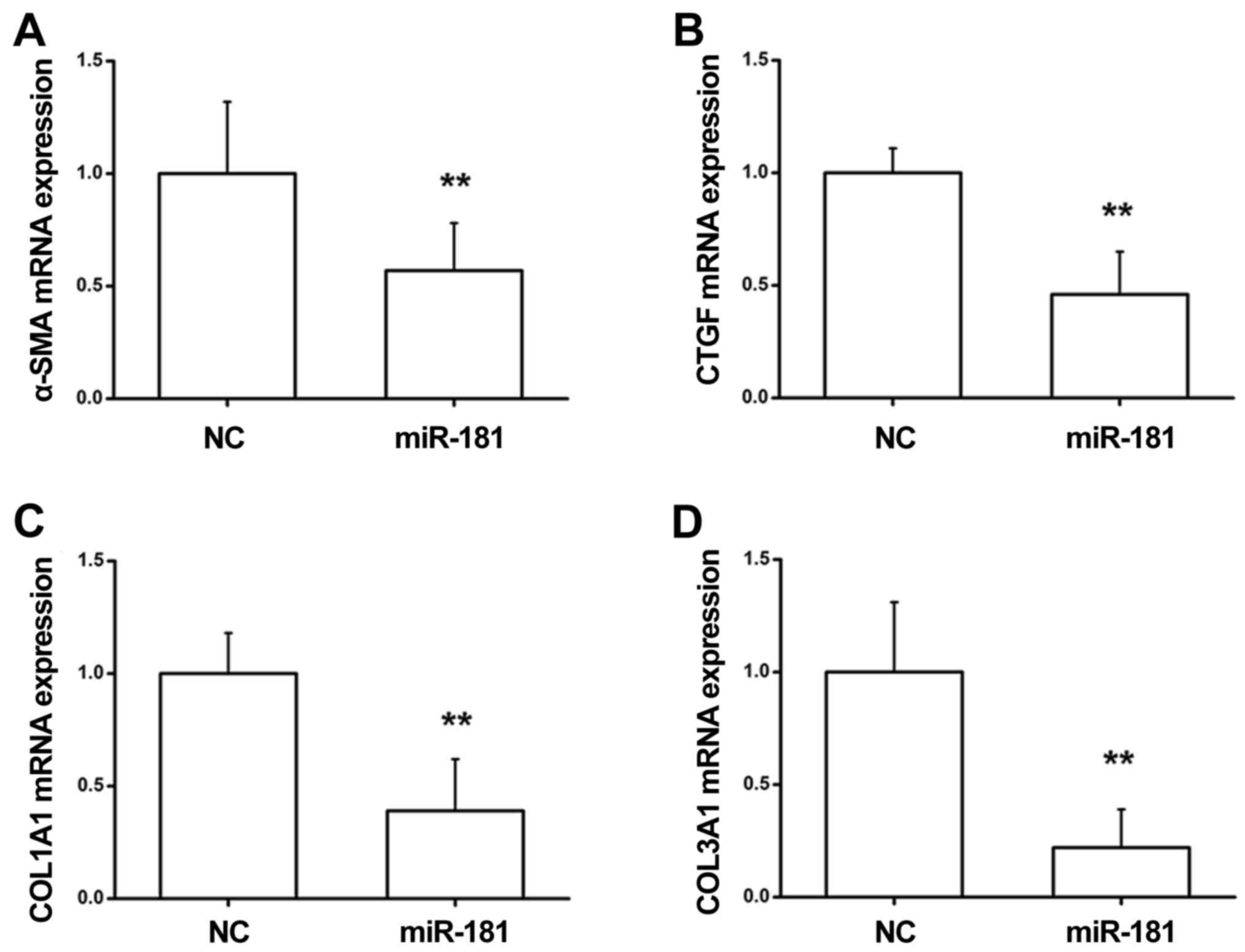|
1
|
Jha V, Garcia-Garcia G, Iseki K, Li Z,
Naicker S, Plattner B, Saran R, Wang AY and Yang CW: Chronic kidney
disease: Global dimension and perspectives. Lancet. 382:260–272.
2013. View Article : Google Scholar : PubMed/NCBI
|
|
2
|
Remuzzi G and Bertani T: Pathophysiology
of progressive nephropathies. N Engl J Med. 339:1448–1456. 1998.
View Article : Google Scholar : PubMed/NCBI
|
|
3
|
Iwano M and Neilson EG: Mechanisms of
tubulointerstitial fibrosis. Curr Opin Nephrol Hypertens.
13:279–284. 2004. View Article : Google Scholar : PubMed/NCBI
|
|
4
|
Müller GA, Zeisberg M and Strutz F: The
importance of tubulointerstitial damage in progressive renal
disease. Nephrol Dial Transplant. 15 (Suppl 6):S76–S77. 2000.
View Article : Google Scholar
|
|
5
|
Deng C, Zheng J, Wan W, Zhang S, Ding Z,
Mao G and Yang S: Suppression of cell proliferation and collagen
production in cultured human hypertrophic scar fibroblasts by Sp1
decoy oligodeoxynucleotide. Mol Med Rep. 7:785–790. 2013.
View Article : Google Scholar : PubMed/NCBI
|
|
6
|
Boor P, Ostendorf T and Floege J: Renal
fibrosis: Novel insights into mechanisms and therapeutic targets.
Nat Rev Nephrol. 6:643–656. 2010. View Article : Google Scholar : PubMed/NCBI
|
|
7
|
Vilayur E and Harris DC: Emerging
therapies for chronic kidney disease: What is their role? Nat Rev
Nephrol. 5:375–383. 2009. View Article : Google Scholar : PubMed/NCBI
|
|
8
|
Chung AC, Dong Y, Yang W, Zhong X, Li R
and Lan HY: Smad7 suppresses renal fibrosis via altering expression
of TGF-β/Smad3-regulated microRNAs. Mol Ther. 21:388–398. 2013.
View Article : Google Scholar : PubMed/NCBI
|
|
9
|
Lorenzen JM, Haller H and Thum T:
MicroRNAs as mediators and therapeutic targets in chronic kidney
disease. Nat Rev Nephrol. 7:286–294. 2011. View Article : Google Scholar : PubMed/NCBI
|
|
10
|
Kato M and Natarajan R: MicroRNAs in
diabetic nephropathy: Functions, biomarkers, and therapeutic
targets. Ann N Y Acad Sci. 1353:72–88. 2015. View Article : Google Scholar : PubMed/NCBI
|
|
11
|
Zhong X, Chung AC, Chen HY, Dong Y, Meng
XM, Li R, Yang W, Hou FF and Lan HY: miR-21 is a key therapeutic
target for renal injury in a mouse model of type 2 diabetes.
Diabetologia. 56:663–674. 2013. View Article : Google Scholar : PubMed/NCBI
|
|
12
|
Zavadil J, Narasimhan M, Blumenberg M and
Schneider RJ: Transforming growth factor-beta and microRNA: mRNA
regulatory networks in epithelial plasticity. Cells Tissues Organs.
185:157–161. 2007. View Article : Google Scholar : PubMed/NCBI
|
|
13
|
Kato M and Natarajan R: Diabetic
nephropathy-emerging epigenetic mechanisms. Nat Rev Nephrol.
10:517–530. 2014. View Article : Google Scholar : PubMed/NCBI
|
|
14
|
Kato M, Zhang J, Wang M, Lanting L, Yuan
H, Rossi JJ and Natarajan R: MicroRNA-192 in diabetic kidney
glomeruli and its function in TGF-beta-induced collagen expression
via inhibition of E-box repressors. Proc Natl Acad Sci USA.
104:3432–3437. 2007. View Article : Google Scholar : PubMed/NCBI
|
|
15
|
McClelland A, Hagiwara S and Kantharidis
P: Where are we in diabetic nephropathy: MicroRNAs and biomarkers?
Curr Opin Nephrol Hypertens. 23:80–86. 2014. View Article : Google Scholar : PubMed/NCBI
|
|
16
|
Khan R: Examining potential therapies
targeting myocardial fibrosis through the inhibition of
transforming growth factor-beta 1. Cardiology. 108:368–380. 2007.
View Article : Google Scholar : PubMed/NCBI
|
|
17
|
Murray LA, Chen Q, Kramer MS, Hesson DP,
Argentieri RL, Peng X, Gulati M, Homer RJ, Russell T, van Rooijen
N, et al: TGF-beta driven lung fibrosis is macrophage dependent and
blocked by Serum amyloid P. Int J Biochem Cell Biol. 43:154–162.
2011. View Article : Google Scholar : PubMed/NCBI
|
|
18
|
Guerquin MJ, Charvet B, Nourissat G, Havis
E, Ronsin O, Bonnin MA, Ruggiu M, Olivera-Martinez I, Robert N, Lu
Y, et al: Transcription factor EGR1 directs tendon differentiation
and promotes tendon repair. J Clin Invest. 123:3564–3576. 2013.
View Article : Google Scholar : PubMed/NCBI
|
|
19
|
Lv ZM, Wang Q, Wan Q, Lin JG, Hu MS, Liu
YX and Wang R: The role of the p38 MAPK signaling pathway in high
glucose-induced epithelial-mesenchymal transition of cultured human
renal tubular epithelial cells. PLoS One. 6:e228062011. View Article : Google Scholar : PubMed/NCBI
|
|
20
|
Lee CG, Cho SJ, Kang MJ, Chapoval SP, Lee
PJ, Noble PW, Yehualaeshet T, Lu B, Flavell RA, Milbrandt J, et al:
Early growth response gene 1-mediated apoptosis is essential for
transforming growth factor beta1-induced pulmonary fibrosis. J Exp
Med. 200:377–389. 2004. View Article : Google Scholar : PubMed/NCBI
|
|
21
|
Saadane N, Alpert L and Chalifour LE:
Altered molecular response to adrenoreceptor-induced cardiac
hypertrophy in Egr-1-deficient mice. Am J Physiol Heart Circ
Physiol. 278:H796–H805. 2000. View Article : Google Scholar : PubMed/NCBI
|
|
22
|
Pritchard MT and Nagy LE: Ethanol-induced
liver injury: Potential roles for egr-1. Alcohol Clin Exp Res 29
(11 Suppl). 146S–150S. 2005. View Article : Google Scholar
|
|
23
|
Livak KJ and Schmittgen TD: Analysis of
relative gene expression data using real-time quantitative PCR and
the 2(-Delta Delta C(T)) method. Methods. 25:402–408. 2001.
View Article : Google Scholar : PubMed/NCBI
|
|
24
|
Meas-Yedid V, Servais A, Noël LH, Panterne
C, Landais P, Hervé N, Brousse N, Kreis H, Legendre C, Thervet E,
et al: New computerized color image analysis for the quantification
of interstitial fibrosis in renal transplantation. Transplantation.
92:890–899. 2011. View Article : Google Scholar : PubMed/NCBI
|
|
25
|
Arora MK and Singh UK: Molecular
mechanisms in the pathogenesis of diabetic nephropathy: An update.
Vascul Pharmacol. 58:259–271. 2013. View Article : Google Scholar : PubMed/NCBI
|
|
26
|
Macconi D, Remuzzi G and Benigni A: Key
fibrogenic mediators: Old players. Renin-angiotensin system. Kidney
Int Suppl (2011). 4:58–64. 2014. View Article : Google Scholar : PubMed/NCBI
|
|
27
|
Ding H, Yang Q, Wang Z, Min R and Li Y:
Effects of sulfotanshinone IIA sodium on murine renal interstitial
fibrosis and CTGF level. Immunol J. 27:398–423. 2011.
|
|
28
|
Zeisberg M and Neilson EG: Mechanisms of
tubulointerstitial fibrosis. J Am Soc Nephrol. 21:1819–1834. 2010.
View Article : Google Scholar : PubMed/NCBI
|
|
29
|
Kota J, Chivukula RR, O'Donnell KA,
Wentzel EA, Montgomery CL, Hwang HW, Chang TC, Vivekanandan P,
Torbenson M, Clark KR, et al: Therapeutic microRNA delivery
suppresses tumorigenesis in a murine liver cancer model. Cell.
137:1005–1017. 2009. View Article : Google Scholar : PubMed/NCBI
|
|
30
|
Ladeiro Y, Couchy G, Balabaud C,
Bioulac-Sage P, Pelletier L, Rebouissou S and Zucman-Rossi J:
MicroRNA profiling in hepatocellular tumors is associated with
clinical features and oncogene/tumor suppressor gene mutations.
Hepatology. 47:1955–1963. 2008. View Article : Google Scholar : PubMed/NCBI
|
|
31
|
Cheng AM, Byrom MW, Shelton J and Ford LP:
Antisense inhibition of human miRNAs and indications for an
involvement of miRNA in cell growth and apoptosis. Nucleic Acids
Res. 33:1290–1297. 2005. View Article : Google Scholar : PubMed/NCBI
|
|
32
|
Croce CM and Calin GA: miRNAs, cancer, and
stem cell division. Cell. 122:6–7. 2005. View Article : Google Scholar : PubMed/NCBI
|
|
33
|
Karp X and Ambros V: Developmental
biology. Encountering microRNAs in cell fate signaling. Science.
310:1288–1289. 2005. View Article : Google Scholar : PubMed/NCBI
|
|
34
|
Lorenzen JM, Kaucsar T, Schauerte C,
Schmitt R, Rong S, Hübner A, Scherf K, Fiedler J, Martino F,
Kumarswamy R, et al: MicroRNA-24 antagonism prevents renal ischemia
reperfusion injury. J Am Soc Nephrol. 25:2717–2729. 2014.
View Article : Google Scholar : PubMed/NCBI
|
|
35
|
Chien HY, Chen CY, Chiu YH, Lin YC and Li
WC: Differential microRNA profiles predict diabetic nephropathy
progression in Taiwan. Int J Med Sci. 13:457–465. 2016. View Article : Google Scholar : PubMed/NCBI
|
|
36
|
Jiang F, Liu GS, Dusting GJ and Chan EC:
NADPH oxidase-dependent redox signaling in TGF-β-mediated fibrotic
responses. Redox Biol. 2:267–272. 2014. View Article : Google Scholar : PubMed/NCBI
|
|
37
|
Bai XY, Ma Y, Ding R, Fu B, Shi S and Chen
XM: miR-335 and miR-34a promote renal senescence by suppressing
mitochondrial antioxidative enzymes. J Am Soc Nephrol.
22:1252–1561. 2011. View Article : Google Scholar : PubMed/NCBI
|
|
38
|
Liu X, Fu B, Chen D, Hong Q, Cui J, Li J,
Bai X and Chen X: miR-184 and miR-150 promote renal glomerular
mesangial cell aging by targeting Rab1a and Rab31. Exp Cell Res.
336:192–203. 2015. View Article : Google Scholar : PubMed/NCBI
|
|
39
|
Li R, Chung AC, Dong Y, Yang W, Zhong X
and Lan HY: The microRNA miR-433 promotes renal fibrosis by
amplifying the TGF-β/Smad3-Azin1 pathway. Kidney Int. 84:1129–1144.
2013. View Article : Google Scholar : PubMed/NCBI
|
|
40
|
Thum T, Gross C, Fiedler J, Fischer T,
Kissler S, Bussen M, Galuppo P, Just S, Rottbauer W, Frantz S, et
al: MicroRNA-21 contributes to myocardial disease by stimulating
MAP kinase signalling in fibroblasts. Nature. 456:980–984. 2008.
View Article : Google Scholar : PubMed/NCBI
|
|
41
|
Zanchi C, Macconi D, Trionfini P, Tomasoni
S, Rottoli D, Locatelli M, Rudnicki M, Vandesompele J, Mestdagh P,
Remuzzi G, et al: MicroRNA-184 is a downstream effector of
albuminuria driving renal fibrosis in rats with diabetic
nephropathy. Diabetologia. 60:1114–1125. 2017. View Article : Google Scholar : PubMed/NCBI
|
|
42
|
Chebotareva NV, Bobkova IN, Varshavskiĭ
VA, Golitsyna EP and Kozlovskaia LV: The role of smooth muscle
alpha-actin in development of renal fibrosis in patients with
chronic glomerulonephritis. Ter Arkh. 78:17–21. 2006.(In Russian).
PubMed/NCBI
|
|
43
|
Li ZI, Chung AC, Zhou L, Huang XR, Liu F,
Fu P, Fan JM, Szalai AJ and Lan HY: C-reactive protein promotes
acute renal inflammation and fibrosis in unilateral ureteral
obstructive nephropathy in mice. Lab Invest. 91:837–851. 2011.
View Article : Google Scholar : PubMed/NCBI
|
|
44
|
Liu F, Chen HY, Huang XR, Chung AC, Zhou
L, Fu P, Szalai AJ and Lan HY: C-reactive protein promotes diabetic
kidney disease in a mouse model of type 1 diabetes. Diabetologia.
54:2713–2723. 2011. View Article : Google Scholar : PubMed/NCBI
|
|
45
|
Landau G, Bercovich Z, Park MH and Kahana
C: The role of polyamines in supporting growth of mammalian cells
is mediated through their requirement for translation initiation
and elongation. J Biol Chem. 285:12474–12481. 2010. View Article : Google Scholar : PubMed/NCBI
|
|
46
|
Cucoranu I, Clempus R, Dikalova A, Phelan
PJ, Ariyan S, Dikalov S and Sorescu D: NAD(P)H oxidase 4 mediates
transforming growth factor-beta1-induced differentiation of cardiac
fibroblasts into myofibroblasts. Circ Res. 97:900–907. 2005.
View Article : Google Scholar : PubMed/NCBI
|
|
47
|
Zhang R, Zhang YY, Huang XR, Wu Y, Chung
AC, Wu EX, Szalai AJ, Wong BC, Lau CP and Lan HY: C-reactive
protein promotes cardiac fibrosis and inflammation in angiotensin
II-induced hypertensive cardiac disease. Hypertension. 55:953–960.
2010. View Article : Google Scholar : PubMed/NCBI
|
|
48
|
Graham HK, Horn M and Trafford AW:
Extracellular matrix profiles in the progression to heart failure.
European young physiologists symposium keynote lecture-bratislava
2007. Acta Physiol (Oxf). 194:3–21. 2008. View Article : Google Scholar : PubMed/NCBI
|
|
49
|
Alexander D, Judex M, Meyringer R,
Weis-Klemm M, Gay S, Müller-Ladner U and Aicher WK: Transcription
factor Egr-1 activates collagen expression in immortalized
fibroblasts or fibrosarcoma cells. Biol Chem. 383:1845–1853. 2002.
View Article : Google Scholar : PubMed/NCBI
|
|
50
|
Aicher WK, Alexander D, Haas C, Kuchen S,
Pagenstecher A, Gay S, Peter HH and Eibel H: Transcription factor
early growth response 1 activity up-regulates expression of tissue
inhibitor of metalloproteinases 1 in human synovial fibroblasts.
Arthritis Rheum. 48:348–359. 2003. View Article : Google Scholar : PubMed/NCBI
|
|
51
|
Friedrich B, Janessa A, Artunc F, Aicher
WK, Müller GA, Lang F, Risler T and Alexander D: DOCA and TGF-beta
induce early growth response gene-1 (Egr-1) expression. Cell
Physiol Biochem. 22:465–474. 2008. View Article : Google Scholar : PubMed/NCBI
|
|
52
|
Lando D, Peet DJ, Gorman JJ, Whelan DA,
Whitelaw ML and Bruick RK: FIH-1 is an asparaginyl hydroxylase
enzyme that regulates the transcriptional activity of
hypoxia-inducible factor. Genes Dev. 16:1466–1471. 2002. View Article : Google Scholar : PubMed/NCBI
|
|
53
|
Kim JN, Kim HJ, Jeong SH, Kye YC and Son
SW: Cigarette smoke-induced early growth response-1 regulates the
expression of the cysteine-rich 61 in human skin dermal
fibroblasts. Exp Dermatol. 20:992–997. 2011. View Article : Google Scholar : PubMed/NCBI
|
|
54
|
Guerquin MJ, Charvet B, Nourissat G, Havis
E, Ronsin O, Bonnin MA, Ruggiu M, Olivera-Martinez I, Robert N, Lu
Y, et al: Transcription factor EGR1 directs tendon differentiation
and promotes tendon repair. J Clin Invest. 123:3564–3576. 2013.
View Article : Google Scholar : PubMed/NCBI
|



